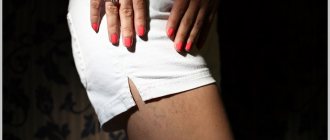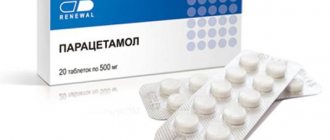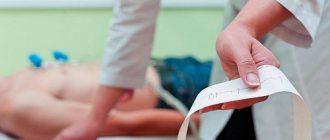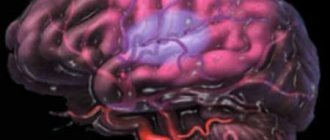Stroke is an acute disorder of cerebral circulation with possible paralysis, loss of consciousness and other symptoms of damage to the central nervous system. Nowadays, stroke is one of the most common causes of death. Most often, elderly people, as well as those who live in areas with a polluted environment, are predisposed to this diagnosis. Most victims die during the acute period of the disease (the first 2-3 weeks). Many patients after a stroke remain completely or partially disabled in 75% of cases. Timely seeking qualified medical care at a specialized clinic will help avoid the development of severe complications of the disease and minimize the risk of death.
The Yusupov Hospital in Moscow provides the services of the best doctors: neurologists, cardiologists, rehabilitation specialists who will do everything possible to cure the patient and help him recover as soon as possible.
Urgent Care
The nurse at the Yusupov Hospital clearly knows the sequence of medical nursing care for ischemic or hemorrhagic stroke, and, if necessary, will explain to the patient’s relatives what manipulations will be performed on the patient.
First of all, the victim is placed so that the head is at an angle of 30 degrees relative to the plane of support. All things that constrict the body (belts, corsets, laces, fasteners) are loosened or, if possible, removed. If the stroke was caused by a sharp increase in blood pressure, the patient is given medications that lower the pressure, while being monitored to prevent it from jumping too sharply. Remove false jaws, if any.
There are rules for taking “emergency medications” that prevent the enlargement of the focus of the disease and protect the brain substance from acute vascular disorders. One of these drugs is glycine, which is allowed and must be given before the ambulance arrives. Glycine is an amino acid that can normalize the balance of the excitatory and inhibitory systems of the brain. This drug has no contraindications or side effects, so 5 tablets should be placed under the patient’s tongue or cheek and wait until completely dissolved.
The responsibilities of the nurse during the nursing process for ischemic stroke include:
- drawing up an individual nursing plan for patient management;
- initial assessment of the general condition of the victim and the risk of developing pathologies;
- monitoring the patient's condition and the development of complications, if any.
There are several stages of patient management:
- prehospital;
- stationary;
- while in the rehabilitation department.
While the patient is in the hospital, nursing care for ischemic stroke consists of the following manipulations:
- competent training of the patient’s relatives to care for the patient;
- organizing the correct nursing process, providing comprehensive care for diseases leading to partial or complete paralysis;
- attentive communication with the patient and his relatives.
The Yusupov Hospital employs attentive and qualified nurses who will provide the patient with the best care. The principles of the clinic staff are based on understanding, attentiveness and honesty towards patients.
Carrying out the nursing process for ischemic stroke, the nurse collects the following data:
- the diagnosed cause of the patient’s stroke;
- the most common complications of ischemic stroke and how to avoid them;
- basics of primary rehabilitation care;
- examinations prescribed for the patient and how to prepare for them;
- clinical manifestations of complications and cerebrovascular accidents;
- how to properly care for patients suffering from disorders of the musculoskeletal system, consciousness, speech and sensitivity;
- other concomitant diseases of the patient.
The nurse treats the patient with respect and attentiveness, and also communicates politely with his relatives, since a good, sincere attitude always evokes positive emotions, and they, as we know, can also speed up the healing process. The nurses at the Yusupov Hospital are very attentive to each patient, performing all their duties at the highest level.
General rules for home care
Immediately after the stroke attack has stopped, care for the stroke patient should be carried out on an ongoing basis. First of all, it is necessary to monitor blood pressure levels, monitor pulse and body temperature. It is necessary to pay attention to the amount of feces and urine excreted. If there is a delay, you should inform your doctor.
It is imperative that the room where the patient is located should be regularly ventilated and maintain an optimal temperature, which should be between +18 and +22 degrees.
Caring for a bedridden patient after a stroke requires that he needs to be washed and washed at least 2-3 times a day. During these procedures, it is recommended to examine the skin and mucous membranes. If care is carried out within the home, then it is necessary to purchase a urine bag and a bedpan.
The patient's body should be washed with a damp towel, which is pre-moistened in a soap solution. Particular attention should be paid to hygiene procedures in the perineum and oral cavity. In some cases, it is recommended to purchase an anti-decubitus mattress.
To prevent the patient from developing bedsores, if the patient is bedridden with a stroke, care must be more thorough. It is recommended to turn the patient over every 3 hours. The areas that are most prone to pressure sores (under the shoulder blades and sides of the chest) should be massaged by the person providing the care. Particular attention should be paid to the feet in the heel area and places where the greatest pressure is felt. This is where bedsores often appear.
Be sure to communicate with the patient; there is no need to exclude him from society. Most likely, the patient will experience changes in character, some people become whiny, others irritable. These changes should be handled with patience. The patient can read books and newspapers. If there are problems with speech, then let him repeat the text out loud, trying to pronounce every word.
Nursing Diagnosis Syndromes
Nursing diagnosis is a comprehensive diagnosis of all areas of a patient’s life, based on his physical, psychological, spiritual and social condition. There are several nursing diagnosis syndromes:
- speech disorder syndromes: dysarthria – difficulty pronouncing words; aphasia – a speech disorder accompanied by difficulty understanding the speech of others;
- movement disorder syndromes: by severity: paralysis, paresis, impaired dexterity and coordination;
- respiratory disorder;
- difficulty urinating;
- asthenia – increased physical and psychological fatigue, which results in weakness, irritability, restless sleep, mood swings;
- digestive disorders;
- circulatory disorders;
- syndrome of sensitivity disorders, most often - numbness of some parts of the body: limbs, face, or, on the contrary, increased sensitivity in one area of the body.
Early nursing work
The acute period after a stroke is critical for the patient, regardless of whether he had a hemorrhagic or ischemic form of pathology. Over the course of several days, mid-level medical staff perform manipulations aimed at reducing the risk of death of the patient and the likelihood of his developing complications. High-quality care in the future will also affect the speed of recovery of lost or altered skills.
Monitoring vital signs and functions
The first action at this stage is to prevent respiratory arrest. In a patient admitted to the hospital, it is necessary to examine the oral cavity and free it from vomit, dentures, and, if necessary, eliminate the retraction of the tongue. Sanitation of the mouth and pharynx should be carried out daily. If necessary, passive breathing exercises are performed.
In addition, it is necessary to ensure compliance with the following points:
- feeding the patient in case of impaired motor functions (through a tube or from a spoon);
- maintaining water balance;
- hemodynamic control;
- assessment and correction of the victim’s mental state;
- pain relief and elimination of tissue swelling;
- control of heart rate and blood pressure.
The frequency of all manipulations is established by a resuscitator or other senior specialist. The nurse should immediately report any changes in the patient's condition to the doctor.
Prevention of complications
An important point in the planning stage is drawing up a list of actions aimed at preventing the occurrence of additional problems. First of all, the nurse must strictly follow the doctor’s orders. This will allow the patient to recover from a critical condition faster and prevent him from developing a second stroke.
Other preventive manipulations are aimed at preventing:
- bedsores - increased attention is paid to the personal hygiene of a bedridden patient, treatment of potentially problematic areas, regular changes in body position;
- thrombosis of the lower extremities - tightly bandaging the legs and placing the lower part of the body in an elevated position;
- pneumonia - turning the patient over every 2.5 hours to prevent congestion;
- urinary tract infections - use disposable diapers or regularly wash the bladder if you have an indwelling catheter.
In some cases, a stroke leads to dysfunction of the pelvic organs. Then, to satisfy the patient’s natural physiological needs, catheterization and enema procedures are performed. These manipulations are also performed by nurses.
Rehabilitation after stroke
Rehabilitation after a stroke can take several months or the rest of your life - it all depends on the systematic and diligent implementation of the rehabilitation methods. The rehabilitation program is individual for each patient. As a rule, the main method of recovery after a stroke is physical therapy (kinesitherapy), which is aimed at fully restoring movements, balance and self-care skills. The Yusupov Hospital has all the necessary equipment that will help patients of any severity of complications recover and live a full life.
Experienced doctors and nurses try to prevent complications in the post-stroke period, such as:
- bedsores;
- falls due to paralysis;
- deep vein thrombosis;
- pneumonia;
- urinary tract infections.
Nursing care for ischemic stroke is no less important than medical procedures. The attentive and sensitive attitude of the staff encourages the patient, simplifying the healing process. Yusupov Hospital provides rehabilitation services after ischemic stroke, based on international medical standards. You can contact the clinic by phone, the coordinating doctor will answer all your questions.
Author
Konstantin Yurievich Kazantsev
Neurologist, leading specialist of the neurology department
Functions of a nurse in the early period
The acute period is the most difficult for the patient. It is in these few days that the fate of the patient is decided, reducing the risk of mortality and the degree of restoration of lost functions.
This period requires the greatest dedication and care from the nurse to the patient. First of all, the following questions should come first for nursing staff:
- ensuring respiratory function and preventing apnea;
- ensuring nutritional and hydration balance;
- prevention of secondary complications and recurrent stroke;
- reducing the risk of thrombosis of the veins and arteries of the lower extremities;
- hemodynamic control;
- control and relief of pain and swelling in paralyzed limbs;
- control and correction of the patient’s mental state;
- prevention of bedsores and moisturizing of the skin;
- ensuring the functional ability of the pelvic organs;
- minimizing emotional and physical stress on the body.
Providing vital functions
The first step is to prevent apnea or aspiration. To do this, immediately after admission to the hospital, the nurse must check the oral cavity for the presence of dentures, vomit, and retraction of the root of the tongue. The reason for the lack of breathing may be a violation of the cough reflex with further accumulation of bronchial secretions in the bronchi.
To resolve such issues, you must follow some rules:
- sanitation of the oral cavity or tracheostomy with removal of secretions from the trachea and bronchi;
- adoption of a special position (Trendelenburg) with the head end lowered and the head turned to the left;
- periodically performing passive breathing exercises.
If motor functions are impaired, the nurse is also involved in nutrition. If there are stem symptoms, and there is a violation of consciousness and the swallowing reflex, then the patient needs to have a nasogastric tube placed. Every 4 hours, the nurse feeds the patient liquid homogeneous food using a syringe through a tube. If a patient has paresis of the limbs, the nurse simply helps the patient eat regular food.
Hydration consists of parenteral and enteral infusions. With their help, water balance is maintained taking into account physiological losses.
Prevention of complications
First of all, to avoid a recurrent stroke, it is necessary to stay with the patient around the clock, strictly follow the doctor’s instructions and ensure maximum emotional and physical peace. In case of increased blood pressure or complaints from the patient, immediately contact a doctor and provide emergency assistance.
To avoid the development or occurrence of vascular thrombosis of the lower extremities, you need to tightly bandage your legs with an elastic bandage. Lack of movement and the impossibility of early activation due to the high risk of recurrent cerebrovascular accident require tight bandaging. It wouldn't hurt to give the limb an elevated position. Using pillows or bolsters, elevate the limb at an angle of 30°. It will also reduce swelling and improve circulation.
Prevention of bedsores occupies a special place in the work of a nurse. This needs to be given due attention and not neglected. It is advisable to adhere to the following:
- observe the rule of daily change of underwear;
- change bed linen when soiled;
- observe the rules of hygiene in relation to the patient and wipe the areas of contact with camphor alcohol;
- every 2 hours, in the absence of independent movement, change the patient’s position (frequently used positions: lying on the back, on the stomach, on the side, the “frog” position, the Fowler and Sims position);
- place special cushions under the sacrum, heels and shoulder blades.
Elimination of pain and swelling in a paralyzed limb is mainly achieved by the above methods of preventing limb thrombosis. In addition, every day the nurse performs a certain amount of passive movements with paralyzed limbs, which will help improve circulation, lymphatic drainage and prevent arthropathies.
Normalization of physiological functions
A stroke can impair the functions of the pelvic organs. This may manifest itself as sphincter weakness due to central paresis and urinary and fecal incontinence or reflex retention and inability to defecate.
To normalize diuresis, a catheter is installed. For women, the procedure is performed by nurses. If the patient is a man, then the case is left to the urologist due to the complexity of the structure (turns and strictures) of the male urethra.
As for stool, most often patients develop intestinal paresis with further constipation. To solve the problem, nurses immediately do enemas. And after the condition has normalized (excessive straining can provoke a repeat case of hemorrhagic stroke), you can help with gentle laxatives (Duphalac).










